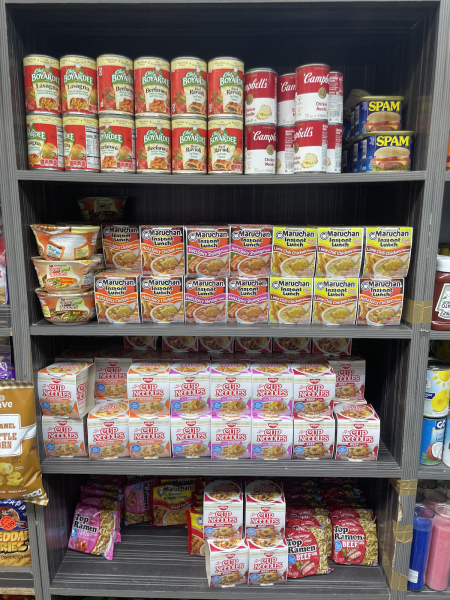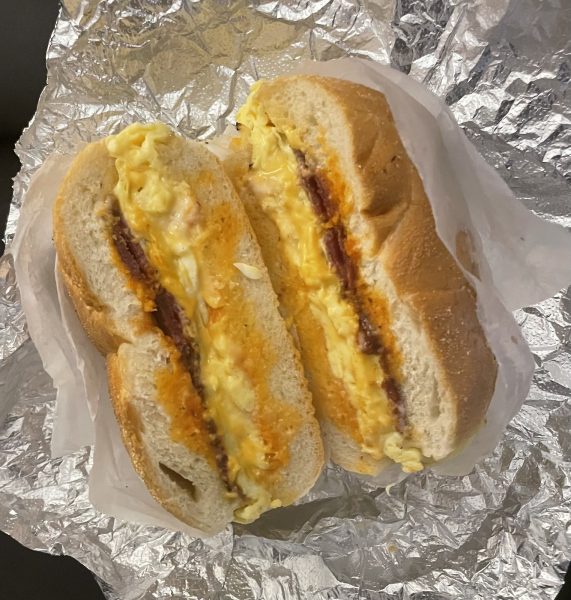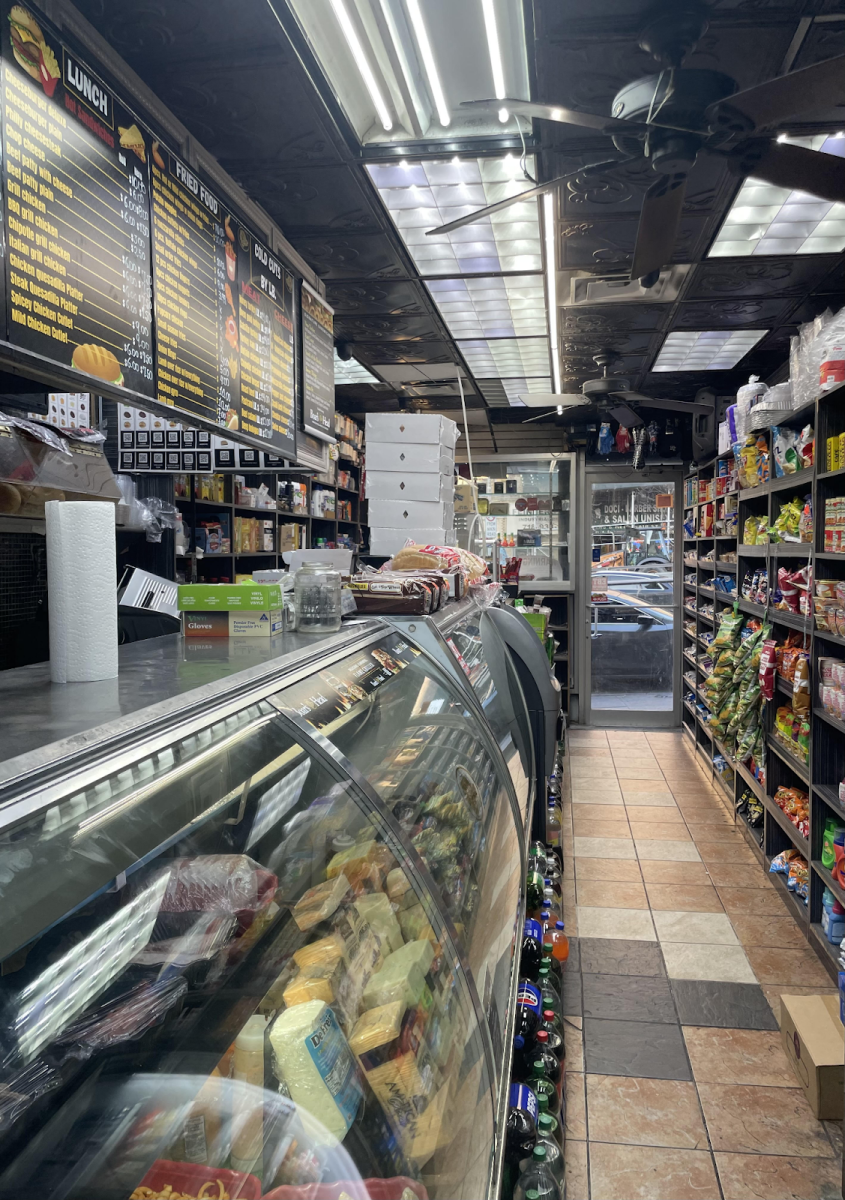If you were to ask a New Yorker in 2018 what they thought would survive the apocalypse, they would most likely give you two things: cockroaches and bodegas. Five years and a global pandemic later, the impregnable nature of the bodega has been brought into question. By no means are bodegas going extinct, but the pandemic’s effect on the economy no doubt affected them. Prices are on the rise, and bodegas in certain neighborhoods are very vulnerable.
Bodegas – an old Spanish word originally meaning ‘ wine storeroom’ or ‘boutique’ – have been a critical part of New York City culture since Cuban, Puerto Rican, and Dominican immigrants settled in the mid-20th century due to political turmoil in the Caribbean and the economic opportunities that America had to offer. These immigrants brought vastly new cultural concepts, including our fabled bodega.
Initially, bodegas served as venues to purchase and drink alcoholic beverages and were comparable to liquor stores or bars, with exact purposes varying from store to store. As time went on and the immigrant population grew, the bodegas shifted to more general stores to account for the exploding population in these Spanish-speaking neighborhoods.
Over time, these hole-in-the-wall storefronts became miniature grocery stores, selling essentials such as milk or over-the-counter medication in Spanish-speaking neighborhoods. More recently, Korean and Middle Eastern immigrants have begun to open up their own bodegas, further pushing the narrative that bodegas attract diversity.
As time went on, bodegas exploded in popularity, with estimates suggesting that 13,000 bodegas span the five boroughs of New York City, with claims that even more exist but under different classifications.
To comprehend any arguments about the bodega, we need to understand what makes a bodega unique. According to the New York City Department of Health, a bodega is classified as a “food purchasing establishment with less than 4,000 square feet and excludes specialty stores, such as bakeries and vitamin stores.” By this definition, most deli establishments fall under the category of bodega due to their convenience items.
These convenience sections vary greatly from store to store, but they almost all offer cheap, hearty food options. Some of the smaller bodegas offer canned food and instant noodles, while some of the bigger ones can sell anything from soups to macaroni and cheese on steam tables.

In all honesty, the fine details of what makes a bodega unique are mostly irrelevant, but some people are still adamant about the distinction between bodegas and similar stores. The one undisputed detail that defines a bodega is whether it is uniquely a deli counter without essentials like milk or canned goods. Katz’s Delicatessen is a good example, as it is an undisputed example of an old-time deli that only offers sliced meats and sandwiches.
Once we get past the undisputed facts, the more minute distinctions become much foggier. Some people believe that bodegas can only exist in residential or ethnically Latin neighborhoods, but this belief goes against the core principle of New York City that we all mix with each other and that there is no truly isolated culture. When most of the city is just a subway ride away from each other, it becomes difficult to gatekeep the concept of a bodega.
However, many still believe that gatekeeping is the solution to protecting bodegas. Over the last few years, a narrative has developed that the concept of the bodega is becoming gentrified. This is a reasonable concern, as many bodegas in low-income communities were forced to close during the Coronavirus pandemic, while other bodegas in more affluent neighborhoods were able to grow and thrive.
The idea of bodegas has become much more mainstream since the Coronavirus pandemic, with large amounts of bodega-related content spreading throughout social media. As of this article’s publication, #bodega has 959 million views on TikTok. Many bodega-related videos on TikTok receive hundreds of thousands of likes, and some videos even reach millions of views.
However, the numbers are not nearly as relevant as the impact that bodegas have had on popular culture. Rahim Mohamed, a New York bodega owner on TikTok who goes by Rah_money1, took the world by storm in 2023. He has amassed over 4.7 million followers by simply posting his process of making absurd breakfast sandwiches behind the deli counter of his bodega.
These sandwiches usually include more than one type of breakfast meat, an interesting sauce, and a highlight piece, which can be just about anything edible, from a Honeybun to Doritos chips.
Though the hype has since subsided, he has started collaborating with major influencers such as hip-hop artist Quavo and K-pop musician Jeon Somi. Both of these videos involve the bodega owner, referred to as ‘ock,’ making a unique sandwich according to the requests made by the featured guest.
Rah_money is not particularly unique, as bodegas have been pioneers for decades, hoping to have the next new thing. The chopped cheese, for example, went from a niche dish originating from Hajji’s in East Harlem to a city-wide sensation that one can find at just about any deli counter in the Greater New York Area.
The chopped cheese is especially iconic due to its simple preparation and filling ingredients. It simply requires ground beef, American cheese, a Kaiser roll, and any toppings that work on a sandwich. It can be thought of as the Philly Cheesesteak’s cousin, with the same base ingredients but in a different form and with more intricate toppings.
While the craze for sandwich-making videos has since subsided, the influence these videos have had is undeniable. For months, many people were imitating his videos, which drummed up even more attention for the bodega. Other delis and bodegas have also reaped the rewards of this newfound craze, contributing to what can be dubbed a cultural “golden age” of bodegas. Datz Deli, a food-serving bodega in Queens, is expected to make over a million dollars in profits in its first year since opening in December 2022. Datz’s Deli serves niche cultural dishes fused with New York deli staples, instantly becoming a hit within the local community. Their biggest success has been the DatMacPatty, a hearty beef patty stuffed with oxtail and creamy mac and cheese.
However, the popularization of the bodega is not all good. Over the summer, Datz Deli had an astonishing hour-long wait at peak hours just to get a taste of the Carribean-American fusion. While this is a sign that the food is good, it also suggests that the food is getting too popular and mainstream, the first step in gentrification and appropriation. There is a fair chance that some form of this dish may end up at a ‘gourmet’ deli at Park Slope.
Even delis without unique dishes or national coverage have felt the effects of popularization. These bodegas do not necessarily have long lines, but their prices have seen massive jumps in the last few years. An average bacon, egg, and cheese sandwich can cost as much as $7 in a Midtown Deli, a drastic increase from its original price of $4.50 at the start of the Coronavirus pandemic.

Midtown is not the only region seeing bodega inflation. Sandwiches and other necessities have been gradually rising in price across all five boroughs, and this is particularly dangerous for certain communities that rely on bodegas.
Before the Coronavirus pandemic, a neighborhood’s poverty level was directly correlated to the ratio of bodegas to supermarkets. In 2016, the New York City Department of Health compiled the number of supermarkets and bodegas in every city district, and the findings were very revealing. Data showed that high-income neighborhoods tended to have fewer bodegas per supermarket, with a ratio as low as three bodegas for every supermarket on the Upper West Side in Manhattan.
However, lower-income neighborhoods had much higher bodega-to-supermarket ratios. Bedford-Stuyvestant, a neighborhood with a historically higher African-American population, had a soaring ratio of 57 bodegas per supermarket.
While this may seem irrelevant, underlying data tells a different story. In 2016, the median household income in Bedford-Stuyvesant was $51,907, about $20,000 dollars below the citywide median household income. These numbers are in stark contrast to those of the Upper West Side, which bolstered a median household income of $120,700 in 2017. Once this is taken into account, it becomes clear that bodegas are a lifeline for many low-income neighborhoods such as Bedford-Stuyvesant, where supermarkets are scarce, and bodegas provide a way to buy groceries conveniently and at affordable prices.
While the future may look grim for bodegas and those who rely on it, there is still hope. A good amount of bodegas have, for the most part, stayed untouched price-wise, and the select few that have become tourist hotspots have actually been given a special chance to thrive. Even if a bodega becomes unfavorable for the inhabitants of the neighborhood, it is almost guaranteed that a new one will spring up to satisfy the needs of the residents. After all, the bodega is both the grocery store and the community hub for so many New Yorkers.
Even if a bodega becomes unfavorable for the inhabitants of the neighborhood, it is almost guaranteed that a new one will spring up to satisfy the needs of the residents. After all, the bodega is both the grocery store and the community hub for so many New Yorkers.

